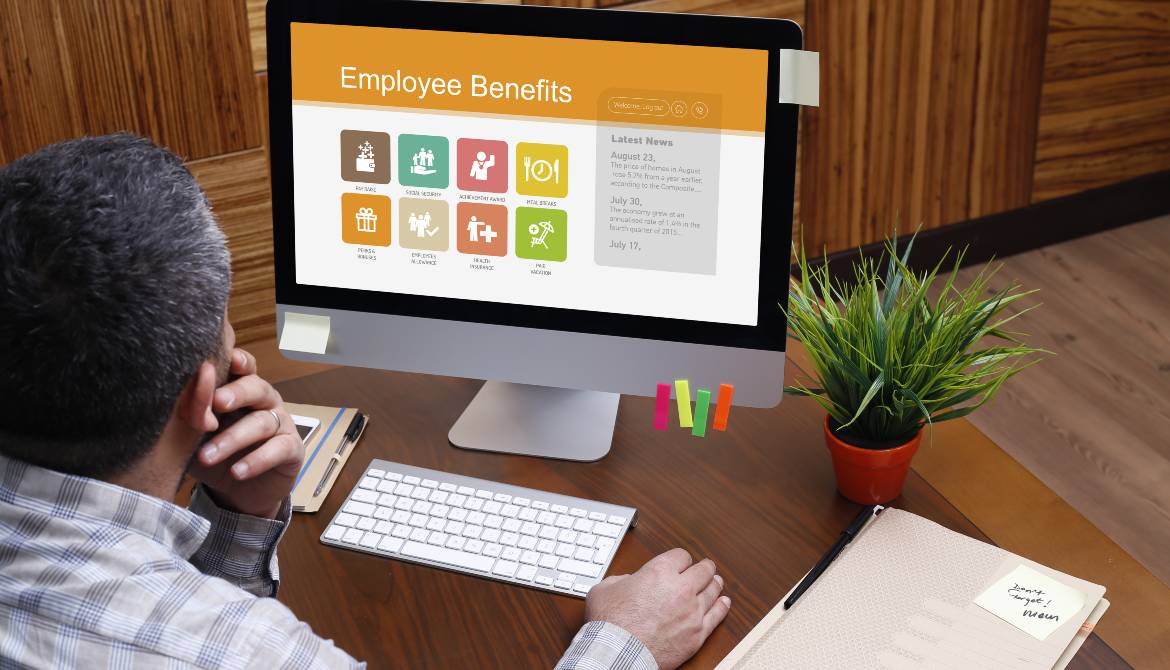4 minutes
3 communication tips to ensure your new employees know their options in these major benefits categories
Onboarding employees takes time, especially for employees who are new to the workforce, such as Gen Z. Benefits plans can be complicated and challenging for brand-new employees, which is why they need education to prepare and plan effectively.
If Gen Z employees aren’t educated on benefits options and how their plans work, they could make decisions that impact their lives and future financial health negatively. Going over benefits with new employees will also increase their job satisfaction and retention.
Health Insurance
For younger Gen Z employees, signing up for health insurance and using their benefits may be entirely new. Many of them have been on their parents’ or on student health plans and may not understand how all of it works.
Take the time to help these employees understand the pros and cons of different available plans, the terminology and how the decision can affect them.
- Premiums: Explain the payment for health insurance premiums and how it’s split by employers and employees, depending on the plan they choose.
- Deductibles: Explain how deductibles work and how employees may end up paying for health care services until the deductible is met. This is especially important with high-deductible plans.
- Co-pays: Every plan has different co-pays that the insured is responsible for paying. It’s important these employees know how the co-pay and premium affect each other.
- In-network versus out-of-network: Most health plans have healthcare provider networks with insurer contracts to receive preferential rates. Employees need to understand how choosing out-of-network providers affect their options and financial responsibilities.
- Essential services: Under the Affordable Care Act, health plans must cover a list of 10 essential services. Be sure to cover them with employees.
- Tax-advantaged accounts: If you have health savings accounts, flexible spending accounts or similar benefits, explain how they work, funding limits and the value they have for employees.
Wealth and Income-Protection Benefits
U.S. students get little financial education, hindering their ability to make smart financial decisions and avoid debt. In addition to the financial wellness education your credit union likely already provides, you can reduce this stress with additional educational programs to help employees understand their benefits packages and financial wellness benefits, such as a 401(k) or even dependent verification.
Tuition Reimbursement or Continuing Education
If you offer tuition reimbursement or continuing education opportunities, make sure employees understand what’s available to them and the requirements. If there are conditions, such as paying for courses up to a certain dollar amount, covering only a specific program of study or requiring minimum academic progress, make these conditions clear to the employee.
Tips for Educating Gen Z on Benefits
1. Communicate to help them understand benefit offerings. To take advantage of the available benefits, employees need to understand what their options are, what’s covered and what steps they should take.
The primary barrier for employees is the lack of awareness and education about benefits. With the right communication, employees are more inclined to participate in benefits programs actively. It’s important to communicate directly to increase employee engagement and knowledge.
You can communicate through workshops, open enrollment emails, enrollment meetings or a forum with questions and answers. Avoid utilizing a one-size-fits-all solution, as some employees will benefit more from certain communication methods than others.
Communicate about the different plans and options employees have and be sure to illustrate how benefits affect wellbeing. Keep it simple and straightforward, rather than using complicated jargon.
2. Make plans customizable. Employees may feel more comfortable with a wide range of benefits that can be tailored to meet to their individual needs. Include a variety of benefits options like medical, dental, vision and perks, allowing employees to customize their plans and find the most cost-effective way to meet their needs and goals.
Benefits play a big role in employee retention and attracting talent. The more customization you can provide, the more employees will feel that they’re putting their hard-earned money toward benefits that have an impact on their lives and futures.
3. Talk about benefits outside of open enrollment. Talking about benefits only during open enrollment isn’t ideal; rather, be sure to communicate to employees about benefits in a way that reflects their life events throughout the year. For example, young employees who are planning to start a family may need to be prepared for childcare and doctors’ visits—during such a busy time, they may need a reminder that you offer relevant benefits!
You should have an open educational channel that employees can access to stay informed continuously in addition to making smart decisions during open enrollment. Include comprehensive information about plans, associated benefits and programs and more.
Streamline the Sign-Up Process
Open enrollment can be overwhelming for both human resources professionals and employees. If employees have to wait or lack the information they need to make a decision, they may seek benefits elsewhere.
Streamline the process by offering alerts and step-by-step instructions for open enrollment and providing education leading up to enrollment to prepare employees to shop effectively.
Educating Gen Z and all new employees about their benefits helps them make good financial decisions and boosts their overall job satisfaction by showing that you care about their health, well-being and financial goals.
Frank Mengert is founder and CEO of ebm, a leading provider of employee benefits solutions that bridges the gap between insurance and technology-driven solutions for brokers, consultants, carriers and employers nationwide. Since 2003, Frank’s forward-thinking has led him to launch five companies—the most recent in 2020 during the height of the pandemic. A leading mind in the world of employee benefits technology, Frank works with many of the top 10 benefit consulting firms as well as large regional players and local state-based firms, providing them with new insights into attracting, winning and retaining business.







